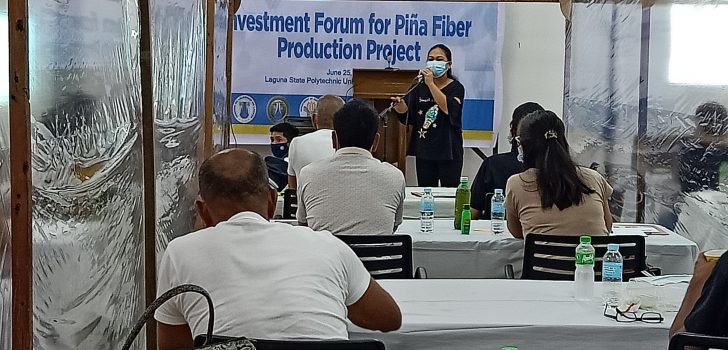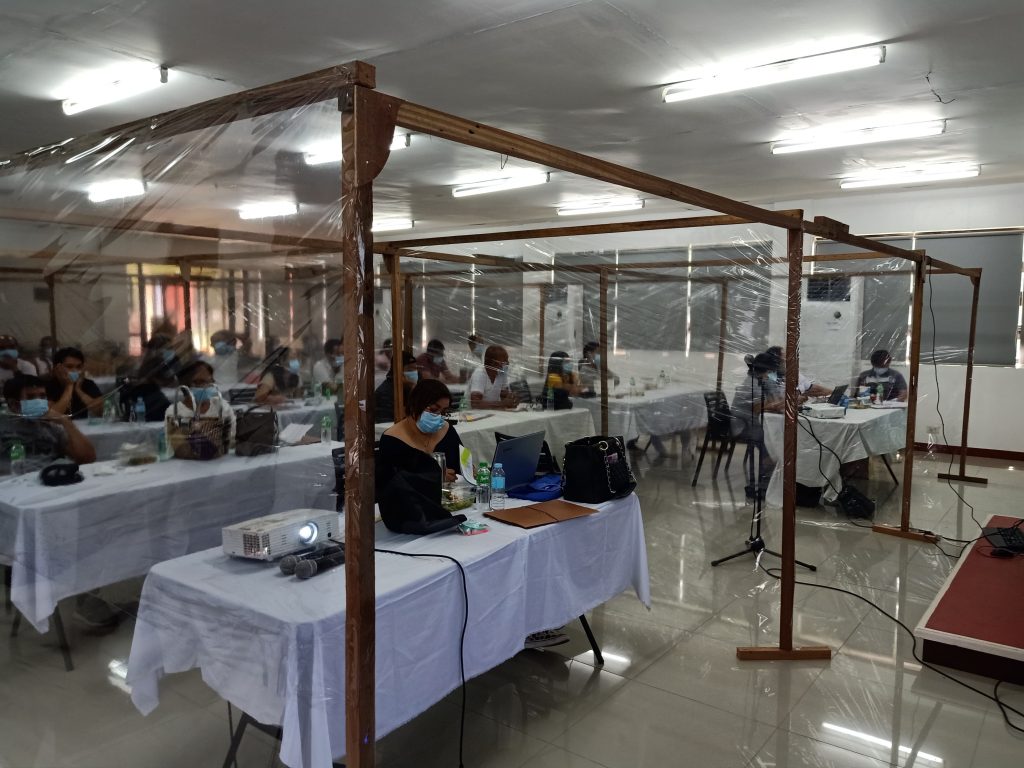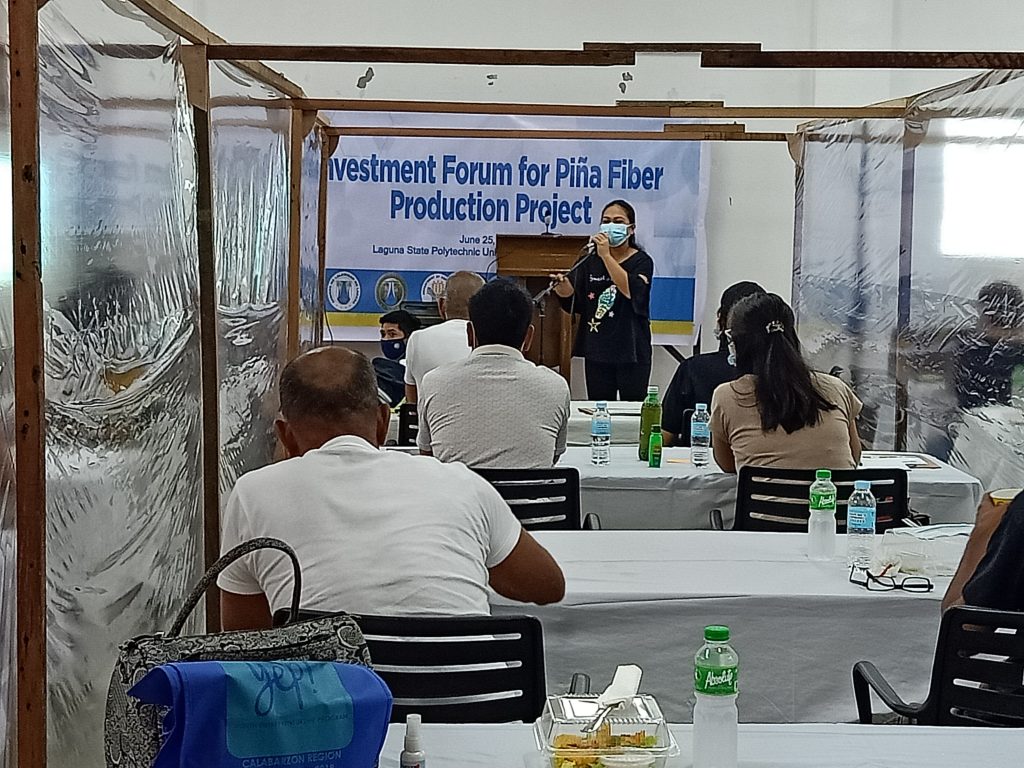
PRDP I-PLAN presents Pineapple VCA to Laguna stakeholders
In a bid to provide value addition to pineapple plant grown in various areas of Laguna, an investment forum on pineapple fiber production was conducted last June 25 in Laguna State Polytechnic University – Santa Cruz.
According to Department of Science and Technology (DOST) CALABARZON Regional
Director Alexander Madrigal, pineapple fiber technology is very promising at this point in time. This was also supported by what San Pablo City Pineapple Farmer’s Association has experienced using the technology as stated by Mr. Mario Escueta, its president.
For the part of the Philippine Rural Development Project (PRDP) CALABARZON, Planning Officer Mary Jane Rayosa of the National and Local Planning (I-PLAN) Component, presented the Value Chain Analysis (VCA) of Pineapple. According to this study, Laguna ranked second among the five provinces of the region with the largest production of pineapple fruit with 15.84 percent production share.
Among the pineapple-producing municipalities and cities of Laguna, San Pablo City has the biggest average land area planted with pineapple (157.97 ha) followed by Alaminos, Calauan, Santa Maria, and Siniloan. In terms of pineapple fruit production, Calauan has the largest average with 1,755.23 metric tons.
Also included in the VCA are the various opportunities on using pineapple by-products. A leather expert visited the Philippines and had an idea to create a sustainable, vegan “leather” made of pineapple leaves which is called Piñatex. This can be used in making shoes, handbags, and car or airplane seats.
Likewise, these pineapple-growing areas is also near the town of Lumban. Known as the “Hand Embroidery Capital of the Philippines,” weavers of this town use pineapple fiber in addition to other natural fibers in crafting Barong Tagalog, Filipiniana dresses, and other embroidered materials.
One constraint from the VCA is the lack of machineries for fiber production. According to Extension and Training Services Chairperson Mary Erlyn Eroles of LSPU Santa Cruz, the university together with DOST can be of help as its College of Engineering has been doing studies on pineapple fiber extractor.
It was also noted that there should be a federation of pineapple growers association in the provincial and regional levels to better represent the pineapple industry in the market and policy creation.
Other speakers for the investment forum included those from the Department of Trade and Industry, Philippine Textile Research Institute, and Philippine Fiber Development Authority, and Asia Textile Inc. The remaining participants were from the local agricultural offices in Laguna, pineapple farmers, and other interested stakeholders. (Lawrence Albert A. Bariring, DA-PRDP CALABARZON RPCO InfoACE Unit)


